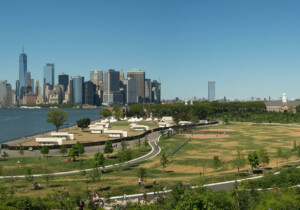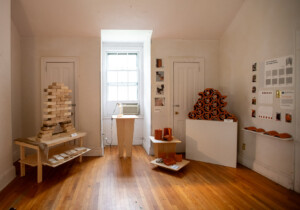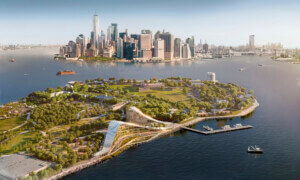With new leadership at its helm, Governors Island, the 172-acre island in the middle of New York Harbor, is poised for some exciting changes. The Architect’s Newspaper (AN) spoke with Michael Samuelian about balancing public and private space in new developments, changes on the New York City waterfront, and his soon-to-be-finalized new job as president and CEO of the Trust for Governors Island.
AN: You are a board member of Friends of Governors Island. How were you selected for your new role?
Michael Samuelian: Through conversations with the mayor’s office, with [deputy mayor] Alicia Glen’s office, a few key people on the board of the Trust, some of whom I knew, some I didn’t know. I don’t know how many people they were speaking with at the time, it was not an atypical series of conversations; we spoke about the position, about why I wanted it, and how I can give back to the city.
As a vice president at Related Companies you were responsible for the development of Hudson Yards, a project that weaves together public and private space. What lessons from that project will you be bringing to Governors Island?
For the last couple of years I was predominately responsible for public space at the Yards, and its interaction with the High Line, the Shed, the Community Board, and the BID, all of the outward-facing entities, so I certainly learned about the balance of public and private needs on the job. I think that’s one of the most important things I’ll bring to Governors Island.
Governors Island is not about creating the most value, necessarily, it’s about creating the right mix of uses. That’s what I’m most excited about. With Hudson Yards, it was about integrating the project with the rest of the neighborhood. With an island, there’s not a lot of integration you can do, but you can focus on some of the most important aspects of public space, which are connectivity and vitality. That’s what we want at Governors Island… to create a place that’s a real destination, that New Yorkers fall in love with.
There’s a lot of development happening on the island’s south side: The Hills were just completed and there are more opportunities for private development there as well. Could you speak to how you see those public and private spaces being integrated?
The most important thing—one of the things the mayor and I discussed about the role—number one, is do no harm. Governors Island is a fantastic place today, and like a good doctor, you don’t want to kill the patient, you want to make him better. Our challenge on Governors Island is that it’s a fantastic place already, but how do we make it better?
The issue of balance is important to me, figuring out what the right balance of public and private uses while making it even more accessible to people. While we have half a million people coming there per year; that pales in comparison to other public parks. One of my first priorities is getting more people, more New Yorkers, to the island and figuring out that right balance of uses. That will be through some additional private uses. But the number one thing is enhancing accessibility, getting more people to the island. There’s some concern about private uses there and honestly I don’t come with any predisposed notion of what should happen on the island.
The other important concept is plurality. There’s not one big idea that will make the island magical, it’s already magical. It’s really about finding the right balance of uses there. Aside from the public space, not one use should dominate the island; all the other uses should support the public space.
I hear you. Is there an ideal balance of uses in your mind, though, or the Trust’s mind?
We have to figure that out. We really want to harness the energy of the city, and aside from housing, that could be any use under the sun: Institutional, cultural, commercial, retail, hotel. Our first task is to figure out what the appropriate mix of uses is, in order to answer the number one goal, which is enhancing access to the island. What are the great public uses that will get people to experience the island? All of the historic buildings, and the public spaces that just opened, those are starting to gain traction with visitors.
For the first time, more people are coming to Governors Island from the Brooklyn side rather than the Manhattan side. I think that’s an important thing for people to know. It’s an island for everyone, not just north Brooklyn or lower Manhattan. It’s an island for the entire city. The more we can get this on people’s radar, the better we’ve done our job.
In terms of broadening access to the island and on the island, are there any specific projects we should be looking out for?
I think the mayor’s plan for enhanced East River Ferry access is a great first step to get New Yorkers thinking about the water and waterborne transportation. Obviously, we are an island so we’d be the main beneficiary of that [laughs]. But with all the waterfront development that’s happening in Greenpoint and Williamsburg, all along the Brooklyn waterfront, all of that will help us as more and more people build a relationship with the water, and being an island on the East River Ferry route, it’s important that we are part of that conversation.
There’s so much development, as you said, happening on New York’s waterfronts in all five boroughs. Do you see Governors Island setting a model for waterfront development in the city?
I’m coming there as a neutral party, not predisposed to any particular uses, but we are starting with relatively neutral territory: We have a million square feet of empty historic buildings, we have the potential for a lot more development on the south side of the island, but there’s no magic number, no magic piece that will make it all sing together. To use kind of a difficult term, it’s about curating the right types of uses that will make Governors Island even more special.
Interview edited and condensed for clarity.










